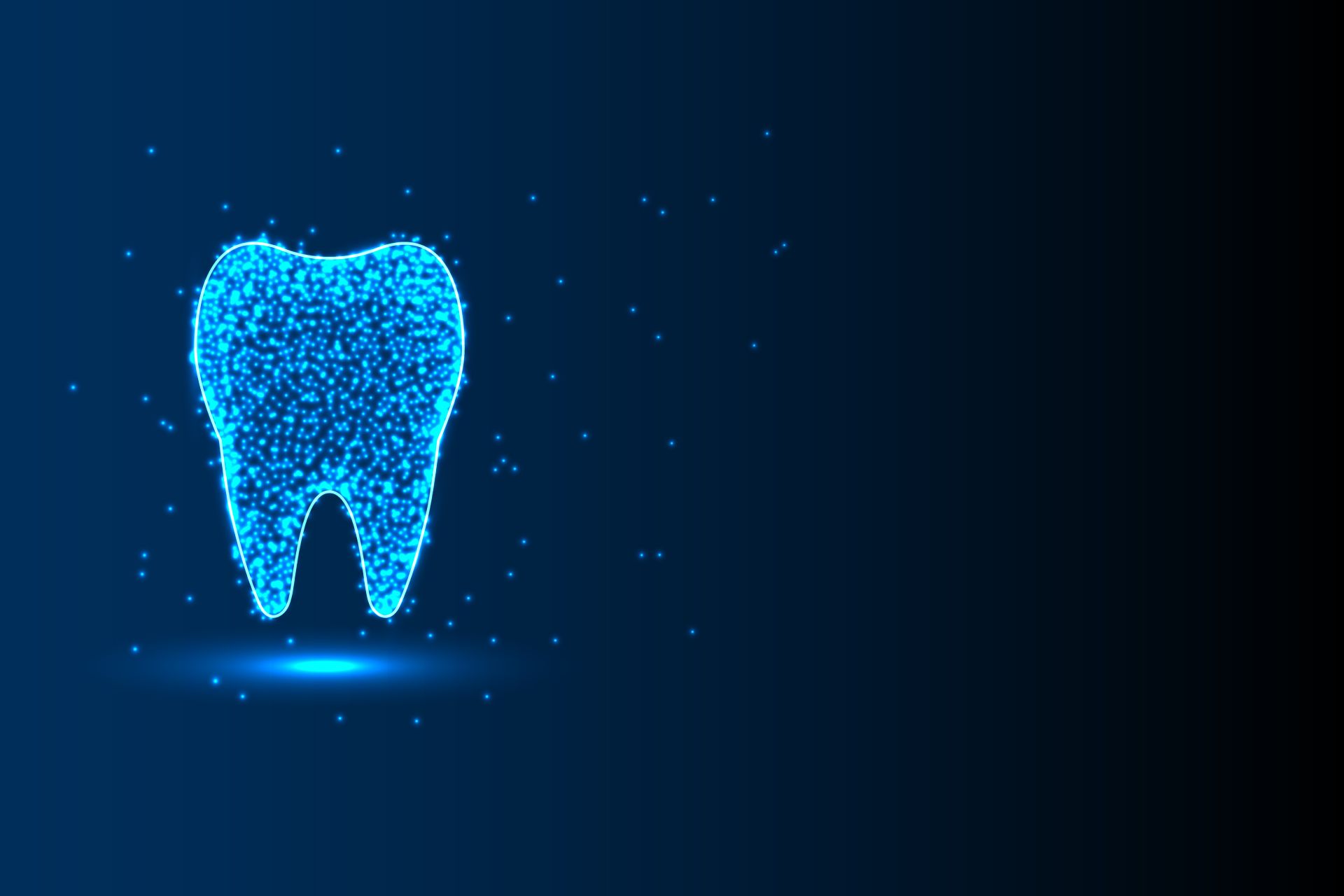Tooth Regrowth Breakthroughs: How AI Is Making Dental Implants Obsolete

The Next Frontier: How AI and Regenerative Science Are Revolutionizing Tooth Regrowth
For millennia, tooth loss has been an irreversible condition met with prosthetic solutions. Today, we stand at the precipice of a dental revolution where tooth regrowth transitions from science fiction to clinical reality, powered by artificial intelligence and breakthroughs in regenerative medicine. This convergence promises to transform dentistry fundamentally.
The Science Behind the Revolution: Two Pathways to Regeneration
1. Pharmacological Reactivation
Japanese researchers at Kyoto University and Kitano Hospital have pioneered TRG-035, an antibody drug that targets the USAG-1 protein—the biological "stop signal" that suppresses third-generation tooth development in humans. By blocking USAG-1, dormant tooth buds are reactivated, enabling natural tooth formation:
-
Human Trials Underway: Phase 1 trials began in September 2024 with adults missing at least one tooth, focusing on safety.
-
Congenital Focus: Phase 2 trials will target children with congenital tooth deficiency.
-
Animal Success: Ferrets and mice grew fully functional teeth with no reported side effects.
2. Bioengineered Tooth Germs
Researchers at King's College London are pioneering lab-grown teeth using smart biomaterials that mimic embryonic development:
-
Cell Signaling Matrix: Novel materials release growth signals gradually, enabling cultured cells to self-organize into tooth structures.
-
Dual Implantation Strategies: Teeth could be grown fully in labs or implanted as "young germs" to develop in the jaw.
-
Biological Superiority: Unlike implants, bioengineered teeth integrate with bone and self-repair.
Table: Comparing Tooth Regeneration Approaches
| Feature | Pharmacological (TRG-035) | Bioengineered (KCL) |
|---|---|---|
| Mechanism | Drug-enabled natural growth | Lab-grown implantation |
| Treatment Timeline | Weeks/Months | Months (growth period) |
| Target Patients | Congenital & acquired loss | Acquired loss primarily |
| Potential Advantages | Minimally invasive | Precise morphology control |
| Current Stage | Phase 1 human trials | Preclinical development |
AI as the Accelerator: From Diagnostics to Personalized Regrowth
Artificial intelligence is becoming the indispensable engine powering this revolution:
-
Predictive Modeling & Simulation: AI analyzes genetic data and 3D scans to predict regrowth potential.
-
Precision Manufacturing: AI-driven bioprinters design scaffolds with cellular-level precision.
-
Diagnostic Integration: Large Language Models assist in interpreting periodontal health data.
-
Surgical Guidance: AI-powered augmented reality systems overlay regrowth site maps during procedures.
Critical Thinking: Navigating Challenges and Ethical Frontiers
While extraordinary, responsible innovation demands rigorous analysis:
1. Biological Uncertainties:
-
Positional Control: Can we guarantee correct tooth alignment?
-
Functional Equivalence: Will regenerated teeth match natural enamel hardness?
-
Longevity Unknowns: Regenerated teeth lack decades of durability data.
2. AI Integration Risks:
-
Over-Reliance Trap: Dental curricula must emphasize AI as a decision-support tool.
-
Algorithmic Bias: Training data limitations may lead to inequitable outcomes.
-
Data Privacy: Genomic and scan data require ironclad security.
3. Ethical & Access Dilemmas:
-
Cost Concerns: Risk of creating a "biological divide" between affluent and low-income patients.
-
Regulatory Pathways: No framework exists for "growing" body parts.
-
Natural vs. Enhanced Debate: Potential for "designer teeth" demands bioethics oversight.
Table: Key Challenges in Tooth Regrowth Translation
| Domain | Challenge | Mitigation Strategy |
|---|---|---|
| Biological | Eruption position accuracy | AI-guided positioning systems |
| Technical | Scalable manufacturing of bio-scaffolds | 3D bioprinting automation |
| Clinical | Long-term durability evidence | International patient registries |
| Ethical | Equitable access across socioeconomic groups | Tiered pricing; insurance advocacy |
| Educational | Preventing AI over-reliance in dentistry | Critical thinking curricula |
The Future Integrated Clinic: A 2030 Vision
By 2030, dental care could involve:
-
AI Diagnostics: Intraoral scanners instantly assess regrowth viability.
-
Personalized Regeneration Plans: Algorithms design drug protocols matched to patient biology.
-
Robotic Assistance: Autonomous systems handle precise cell injections.
-
Remote Monitoring: AI tracks eruption progress via smartphone photos.
Conclusion: A Thoughtful Path Forward
Tooth regrowth represents one of medicine's most transformative horizons—a convergence of developmental biology, AI, and materials science. As human trials progress, the "impossible" dream of natural tooth replacement inches toward reality. However, this revolution demands critical engagement from clinicians and policymakers. We must embrace AI's potential while safeguarding against over-reliance, ensure equitable access, and maintain rigorous scientific scrutiny. In doing so, we'll cultivate a new era of patient-centered, biologically integrated dental care that transcends the limitations of drills and prosthetics.
The future smiles bright, but it demands our clearest thinking today.




